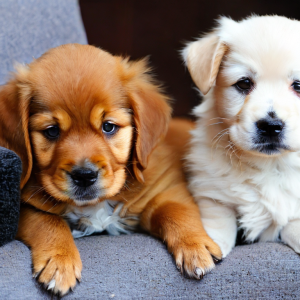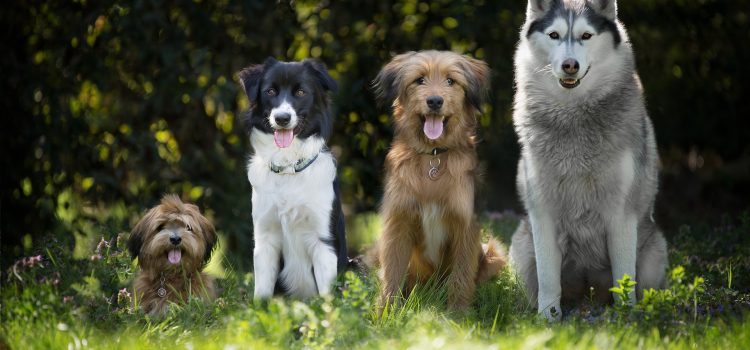
Dog Throwing Up and Diarrhea: Causes , Symptoms and Remedies
Introduction
Dogs are beloved companions and their health and well-being are paramount to their owners. However , it can be concerning when a dog starts experiencing symptoms like throwing up and diarrhea. These symptoms can indicate an underlying health issue that requires attention. In this article, we will explore the possible causes , symptoms and remedies for dog throwing up and diarrhea.
Understanding Dog Throwing Up and Diarrhea
Dog throwing up and diarrhea are common symptoms that indicate a disturbance in the digestive system. Throwing up , also known as vomiting , is the forceful expulsion of stomach contents through the mouth. On the other hand , diarrhea refers to the frequent passage of loose or watery stools.

Common Causes of Dog Throwing Up and Diarrhea
Several factors can contribute to a dog experiencing throwing up and diarrhea. These may include:
1. Dietary Indiscretion
Dogs are known for their curious nature and may consume things unsuitable for their digestion. Eating spoiled food, garbage, foreign objects, or sudden dietary changes can lead to gastrointestinal upset.
2. Infections
Bacterial , viral or parasitic infections can cause digestive disturbances in dogs. Parvovirus , canine distemper , salmonella and giardia are common causes.
3. Food Allergies or Intolerances
Like humans , dogs can develop allergies or sensitivities to certain food ingredients. This can trigger gastrointestinal issues including throwing up and diarrhea.
4. Stress or Anxiety
Dogs can be sensitive to changes in their environment or routine. Stressful events such as moving, boarding, or separation anxiety may result in digestive disturbances.

Recognizing the Symptoms
Observing your dog’s behavior and identifying the symptoms associated with throwing up and diarrhea is essential. Common symptoms include:
Frequent vomiting
Diarrhea (loose or watery stools)
Loss of appetite
Lethargy or weakness
Dehydration
Abdominal pain or discomfort
Blood in vomit or stool
When to Seek Veterinary Care
While mild throwing up and diarrhea cases may resolve independently, certain situations warrant immediate veterinary attention. Contact your veterinarian if:
Your dog is a young puppy, elderly, or has an underlying health condition.
The symptoms are severe, persistent, or worsening.
There is blood in the vomit or stool.
Your dog shows signs of dehydration (dry gums, excessive thirst, decreased urination).

Home Remedies for Dog Throwing Up and Diarrhea
Before seeking veterinary care, you can try some home remedies to alleviate mild symptoms. However , it’s crucial to consult your vet if the symptoms persist. Here are a few remedies you can try :
Withhold Food: Give your dog’s digestive system a rest by temporarily withholding food for 12-24 hours. Make sure to provide access to fresh water to prevent dehydration.
Bland Diet: After fasting, gradually introduce a bland diet consisting of boiled chicken and rice or a veterinarian-recommended commercial bland diet.
Probiotics: Probiotic supplements can help restore the balance of beneficial gut bacteria and aid digestion. Consult your vet for appropriate probiotic options.

Dietary Adjustments to Manage the Condition
After your dog’s digestive system has stabilized , dietary adjustments may be necessary to manage the condition and prevent future episodes. Consider the following :
High-Quality Diet: Opt for high-quality, easily digestible dog food free from common allergens.
Limited Ingredient Diets: If food allergies are suspected, a restricted ingredient diet may be recommended. These diets contain fewer ingredients, making identifying and eliminating potential allergens easier.
Avoid Table Scraps: Refrain from feeding your dog table scraps or human food, which can lead to digestive disturbances.
Hydration and Electrolyte Balance
Proper hydration is vital for your dog’s recovery. Offer clean, fresh water at all times, and consider the following tips:
Electrolyte Solutions: In cases of severe dehydration, your vet may recommend providing electrolyte solutions specifically designed for dogs.
Ice Cubes or Pedialyte: You can offer ice cubes or diluted Pedialyte to encourage hydration if your dog is reluctant to drink water.

Preventive Measures to Avoid Recurrence
To minimize the chances of your dog experiencing throwing up and diarrhea in the future, consider the following preventive measures:
Stick to a Consistent Diet: Maintain a consistent feeding routine and avoid sudden changes in your dog’s diet.
Avoid Harmful Substances: Keep harmful substances such as cleaning chemicals , toxic plants and medications out of your dog’s reach.
Stress Management: Minimize stress and anxiety in your dog’s life through exercise, mental stimulation and a stable environment.
Conclusion
Dog throwing up and diarrhea can be distressing for the pet and its owner. Understanding the common causes, recognizing the symptoms, and implementing appropriate remedies and preventive measures can help your furry friend recover and maintain their digestive health.
In conclusion, understanding the causes, symptoms, and remedies for dog throwing up and diarrhea is crucial for maintaining your dog’s health.
By providing appropriate care , dietary adjustments and preventive measures , you can help your furry companion recover and minimize the chances of future digestive issues.
Remember , if the symptoms persist or worsen , it is always best to consult your veterinarian for professional advice and guidance.

FAQs
1. Can I give over-the-counter medications to my dog for throwing up and diarrhea?
Administering over-the-counter medications without veterinary guidance is not recommended, as some human medications can harm dogs. Consult your vet for appropriate medications.
2. How long should I wait before seeking veterinary care for my dog throwing up and diarrhea ?
If the symptoms are minimal and your dog is generally healthy you can try home cures for 24-48 hours. However if the symptoms linger or worsen or your dog displays indications of dehydration it is advised to consult your veterinarian.
3. Can stress or anxiety cause throwing up and diarrhea in dogs?
Yes, stress or anxiety can disrupt a dog’s digestive system, leading to throwing up and diarrhea. Minimizing stressors and providing a stable environment can help alleviate these symptoms.
4. Are there any specific dog breeds more prone to digestive issues?
While digestive issues can affect any dog breed , some breeds may be more prone to certain conditions. For example , brachycephalic species (like Bulldogs and Pugs) may have a higher risk of gastrointestinal problems.
5. How can I prevent my dog from eating things they shouldn’t and getting digestive issues ?
To prevent your dog from ingesting harmful substances , ensure a safe environment by keeping household chemicals , toxic plants , and small objects out of their reach. Proper training and supervision can also help discourage destructive chewing or scavenging behavior.



















Comments
The Complete Guide to Buying Betta Fish and All You Need to Know About the Betta Fish
Dog Coughing and Gagging: Causes , Symptoms and Treatment Options
Butter Corn Snake : Ultimate Care,Feeding PRO TIPS